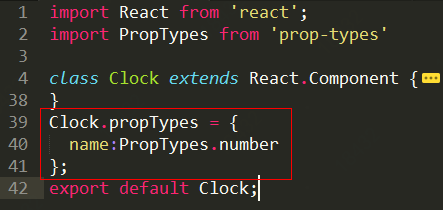简介:在React中,数据可以以流的形式自上而下的传递,每当你使用一个组件的时候,你可以看到组件的props属性会自上而下的传递。但是,在某些情况下,我们不想通过父组件的props属性一级一级的往下传递,我们希望在某一级子组件中,直接得到上N级父组件中props中的值。
1.一般情况下通过props传值的情况
class Button extends React.Component { render() { return ( <button style={{background: this.props.color}}> {this.props.children} </button> ); } } class Message extends React.Component { render() { return ( <div> {this.props.text} <Button color={this.props.color}>Delete</Button> </div> ); } } class MessageList extends React.Component { render() { const color = "purple"; const children = this.props.messages.map((message) => <Message text={message.text} color={color} /> ); return <div>{children}</div>; } }
我们来分析一下这段代码,大致的组件分为3级:
顶层MessageLists——>Message一级子类——>Button底层子类
我们来看从父组件到子组件的值的传递情况:
(1)text:
我们可以看到,在顶层组件MessageLists中的值,传递到一级子组件Message中,并在此组件中被使用。
(2)color:
再看props中的color的传递情况,在顶层组件MessageLists中的值,先传递到一级子组件Message中,
在传递到二级子组件Button中,最后在二级子组件中被使用。
综上:这就是一般在React中,所使用的通过props属性,在父组件与子组件中进行值传递。
2.如何利用React中的Context来进行值的越级传递。
class Button extends React.Component { render() { return ( <button style={{background: this.context.color}}> {this.props.children} </button> ); } } Button.contextTypes = { color: React.PropTypes.string }; class Message extends React.Component { render() { return ( <div> {this.props.text} <Button>Delete</Button> </div> ); } } class MessageList extends React.Component { getChildContext() { return {color: "purple"}; } render() { const children = this.props.messages.map((message) => <Message text={message.text} /> ); return <div>{children}</div>; } } MessageList.childContextTypes = { color: React.PropTypes.string };
上述代码,我们实现了通过React的Context实现了值——color的越级传递。我们来分析一下上述的方法。
(1)首先在顶层组件中:
MessageList.childContextTypes = {
color: React.PropTypes.string
};定义了顶层组件所拥有的子类context对象——该顶层组件所拥有的的子类context对象为color,且必须为字符串。
然后通过getChildText方法,来给子context对象的属性赋值:
getChildContext() {
return {color: "purple"};
}
这样就完成了顶层组件中,context对象的赋值。
(2)越级传递,因为color属性只在最底层使用
我们来看color属性的越级传递,因为color属性,在一级子组件Message中并没有直接用到,因此我们可以
直接传递到最底层(越级),在Button组件中使用。
首先Button组件中,再次声明了所接受到的context的子组件color的类型,声明必须为字符串:
Button.contextTypes = {
color: React.PropTypes.string
};然后可以通过this.context.color这种方式调用:
<button style={{background: this.context.color}}>
{this.props.children}
</button>综上:这样,我们发现通过Context,我们就能实现值得越级传递。
注意的是:子组件要用this.context.color进行调用
======================================================================================================
注意:
constructor(props, context) {
super(props, context);
}
类似上面 一定要把context引进来

注意引入propTypes的方式